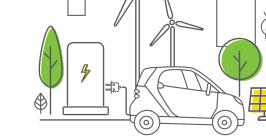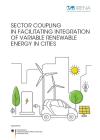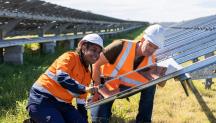

-
-
IRENA (2021), Sector coupling in facilitating integration of variable renewable energy in cities, International Renewable Energy Agency, Abu Dhabi.
Copied
/-/media/Files/IRENA/Agency/Publication/2021/Oct/IRENA_Sector_Coupling_in_Cities_2021.pdf?rev=26fb6fdd94c743c09a09a54f438ff30d
Copied
Sector Coupling in Facilitating Integration of Variable Renewable Energy in Cities
Newsletter
To accommodate high shares of variable renewables in an effort to address global climate change, the future power system would require significant enhancement in grid flexibility.
This report highlights the importance of sector coupling as a key source of flexibility that cities can explore to stabilise power grid operations when integrating high shares of variable renewable energy sources. It presents a range of sector coupling opportunities available for use in cities.
In this report, the focus is on four main areas: self-consumption of variable renewable energy sources at various scales, the role of thermal energy storage in sector coupling strategies, electro-mobility (a promising scenario for decarbonising the transport sector with renewable electricity) and green hydrogen.
Quantifying the sector coupling opportunities at a city level requires an integrated approach to model the increasing complexity and interconnectedness of energy systems. The report also introduces a modelling tool to provide quantitative evaluation of sector coupling opportunities in a given context, with a focus on the buildings sector given its importance for achieving net zero cities and communities. Cross-sectoral synergies through sector coupling technologies and trade-off options can be measured against optimisation objectives in different scenarios. The tool was applied in two pilot studies for districts in China and Costa Rica.
This report aims to facilitate the decision-making process within cities transitioning towards a net zero future, and also help other urban stakeholders understand that cities hold great potential to accelerate, and also benefit from, the race to net zero.




